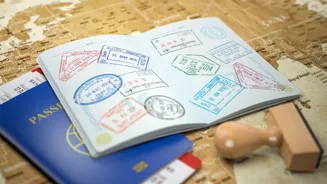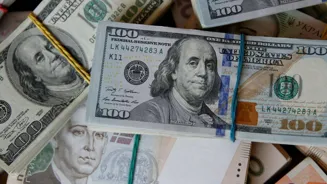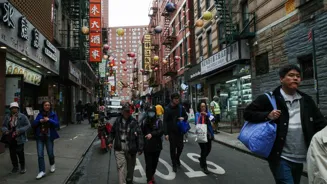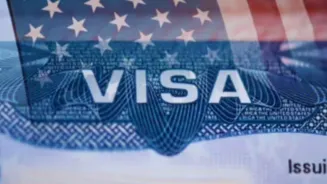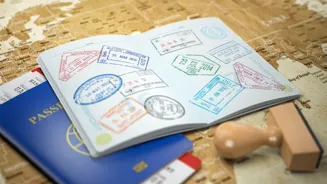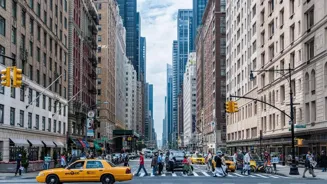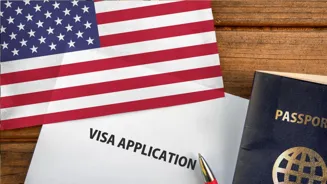What is the story about?
The United States is introducing a pilot programme requiring certain travellers to pay bonds of up to $15,000 to enter the country. According to an unpublished temporary final rule posted in the Federal Register on Tuesday, the
12-month initiative, proposed by the State Department, aims to reduce visa overstays.
This marks the Trump administration’s latest move to tighten immigration controls in the US. Based on the Federal Register notice, here’s what is known about the scheme:
Who Needs to Pay: The pilot programme applies to leisure and business visitors who require B-1 or B-2 visas. It targets travellers from countries with high visa overstay rates, inadequate screening and vetting systems, or those that offer citizenship by investment without
requiring residency.
Countries Affected: The US Department of State is expected to announce the list of affected countries as early as today. The Department of Homeland Security’s 2023 Entry/Exit Overstay Report, released on 5 August 2024, will inform the selection. This report identifies Chad (50%), Laos (35%), and Haiti (31%) as countries with particularly high overstay rates.
Countries with the largest total number of overstays include Mexico (approximately 49,000), Colombia (41,000), Haiti (27,000), Brazil
(21,000), Venezuela (22,000), and the Dominican Republic (20,000).
Bond Amounts: Bonds will be set at three levels: $5,000, $10,000, and $15,000. The bond amount will be determined by consular officials based on a traveller’s personal circumstances, such as the purpose of travel, employment status, income, skills, and education. Travellers required to pay a bond must enter and exit the US through specific ports of entry, which will be announced later.
How Many Will Be Affected: The
State Department expects approximately 2,000 individuals to be subject to visa bonds during the pilot. This relatively low number reflects both the number of people eligible for US visas and the uncertainty over how many can afford to pay the bond.
Why a Pilot Programme?
The pilot is designed to evaluate the feasibility of administering and releasing bonds, and to encourage foreign governments to address overstay rates and improve traveller screening processes.
Visa Overstay Statistics:
According to the US Congressional Research Service, between 2016 and 2022, only 1% to 2% of non-immigrant visitors overstayed their visas each year. However, data suggests that 42% of the estimated 11 million undocumented individuals in the US originally entered legally but failed to leave. The State Department’s visa bond notice states that over 320,000 people overstayed their visas in 2019, including those who eventually departed.
How It Differs from Other Rules: Unlike the blanket $250
“visa integrity fee” announced in July, this pilot provides more detail, including a start date, implementation procedures, and how bonds will be posted and refunded.
Programme Details: The 12-month pilot will begin on 20 August. It will apply to B-1 and B-2 non-immigrant visas. Those required to pay a bond must travel through a designated list of airports, which will be specified in due course.
This marks the Trump administration’s latest move to tighten immigration controls in the US. Based on the Federal Register notice, here’s what is known about the scheme:
Who Needs to Pay: The pilot programme applies to leisure and business visitors who require B-1 or B-2 visas. It targets travellers from countries with high visa overstay rates, inadequate screening and vetting systems, or those that offer citizenship by investment without
Countries Affected: The US Department of State is expected to announce the list of affected countries as early as today. The Department of Homeland Security’s 2023 Entry/Exit Overstay Report, released on 5 August 2024, will inform the selection. This report identifies Chad (50%), Laos (35%), and Haiti (31%) as countries with particularly high overstay rates.
Countries with the largest total number of overstays include Mexico (approximately 49,000), Colombia (41,000), Haiti (27,000), Brazil
Bond Amounts: Bonds will be set at three levels: $5,000, $10,000, and $15,000. The bond amount will be determined by consular officials based on a traveller’s personal circumstances, such as the purpose of travel, employment status, income, skills, and education. Travellers required to pay a bond must enter and exit the US through specific ports of entry, which will be announced later.
How Many Will Be Affected: The
Why a Pilot Programme?
The pilot is designed to evaluate the feasibility of administering and releasing bonds, and to encourage foreign governments to address overstay rates and improve traveller screening processes.
Visa Overstay Statistics:
How It Differs from Other Rules: Unlike the blanket $250
Programme Details: The 12-month pilot will begin on 20 August. It will apply to B-1 and B-2 non-immigrant visas. Those required to pay a bond must travel through a designated list of airports, which will be specified in due course.
Do you find this article useful?
